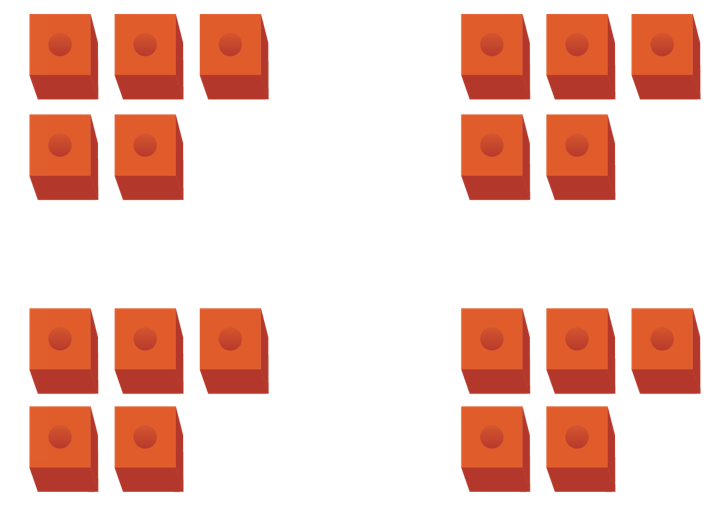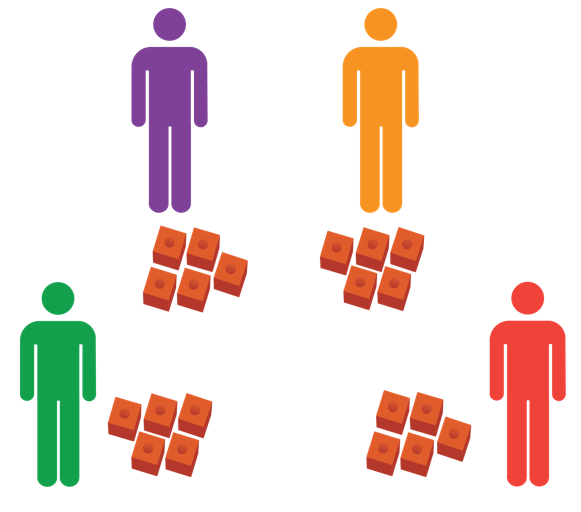The purpose of this activity is to support students in applying their multiplicative fact knowledge to situations that involve equal sharing.
- Individual objects of interest and relevance to students. This lesson uses connecting cubes as an example.
 Revisit the meaning of multiplication facts, like 4 x 5 = 20.
Revisit the meaning of multiplication facts, like 4 x 5 = 20.
Ask students to create a physical model of the fact using cubes.
- Look for students to form four sets of five cubes. This shows that students understand the structure of the factors and see the product as a combined amount.
- Discuss the meaning of the symbols in the equation.
What does 4 mean in this equation? (Number of equal sets)
What does 5 mean in this equation? (Number of objects in each set)
What does 20 mean? (Total number of objects)
What does the x symbol mean? (of)
What does = mean? (Same quantity on both sides, a balance)
 Pose a related equal sharing problem.
Pose a related equal sharing problem.
I have 20 cubes to share equally among four people. How many cubes will each person get?
- Look for students to see the connection between 4 x 5 = 20 and the equal sharing problem.
If not, physically share 20 cubes among four people.
- Record multiplication, division, and fraction equations for the same situation; 4 x 5 = 20, 20 ÷ 4 = 5, and 1/4 x 20 = 5.
Invite students to make connections, especially between the multiplier in the multiplication equation and the divisor in the division equation.
- Pose similar related multiplication and division problems. Good examples include:
- 6 x 5 = 30, 30 ÷ 6 = 5, and 1/6 x 30 = 5.
- 10 x 4 = 40, 40 ÷ 10 = 4, and 1/10 x 40 = 4.
- 3 x 5 = 15, 15 ÷ 3 = 5, and 1/5 x 15 = 3.
- 5 x 8 = 40, 40 ÷ 5 = 8, and 1/5 x 40 = 8.
Allow students to work in groupings that will encourage peer scaffolding and extension. Some students might benefit from working independently, whilst others might need further support from the teacher. Consider also the different means of action and expression (e.g. verbal, written, digital, physical) that your students might use to demonstrate their thinking. You might introduce relevant te reo Māori kupu, such as whakarea (multiplication).
- Progress from using physical models to working with the stories alone.
Next steps
- Increase the level of abstraction by covering the materials or using diagrams without visible numbers of cubes, then progressing to stories and equations only.
- Ask anticipatory questions like, “if I know 3 x 10 = 30, what equal sharing problems can I solve?”
- Extend the difficulty of the comparisons so students apply a full range of their basic multiplication facts.